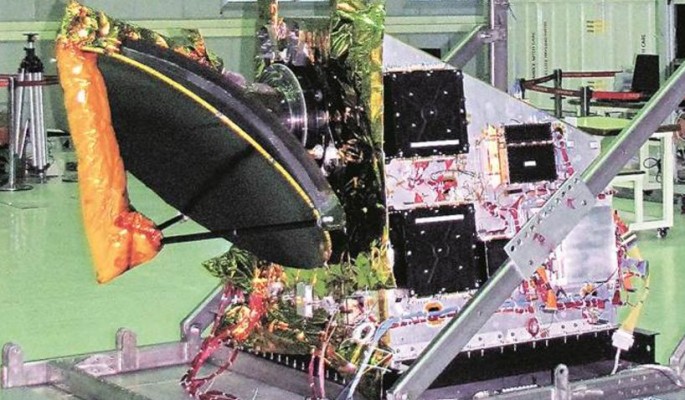India's heavy-lift Polar Satellite Launch Vehicle (PSLV) rocket successfully placed eight satellites into separate polar low Earth orbits on Sept. 26, a historic first for India and the Indian Space Research Organization (ISRO).
The fifth PSLV launch for 2016 was also the most number in a single year for India's more confident commercial launch segment. The mission was also the first in which ISRO used "multiple burn technology" to orbit satellites. A sixth PSLV mission is planned towards year-end.
This latest mission, PSLV-C35, blasted off from the Satish Dhawan Space Center with three satellites from Algeria (Alsat-1B, 103 kg; Alsat-2B, 117 kg and Alsat-1N, 7 kg); three from India (SCATSAT-1, 371 kg; Pratham, 10 kg and Pisat 5.25 kg); one from Canada (NLS-19, 8 kg) and one from the United States (Pathfinder-1, 44 kg).
SCATSAT-1 is a weather satellite while the two other Indian satellites are technology demonstration sats built by Indian universities. The eight satellites have a combined weight of 665 kilograms.
"We have been able to put different satellites, from different countries, plus our own SCATSAT-1 into different orbits at different local times," said ISRO Chairman A.S. Kuran Kumar. "This is one of the new capabilities which PSLV has demonstrated."
The mission is the first time ISRO used "multiple burn technology" to successfully place satellites in different orbits. Multiple burn technology means switching off and switching on a rocket engine in different orbits.
"We are using the multiple burn technology for the first time for launching satellites. Earlier we switched off and switched on the fourth stage (engine) of PSLV to test the technology," said K. Sivan, director of the Vikram Sarabhai Space Center.
The heaviest payload was India's SCATSAT-1, a meteorological satellite placed into a 730 kilometer orbit some 17 minutes after launch. ISRO said SCATSAT-1 is healthy in orbit and is sending telemetry.
SCATSAT-1, which carries a Ku-band scatterometer, will provide wind vector data for weather forecasting, cyclone detection and tracking services. After releasing SCATSAT-1, PSLV's upper stage did multiple burns to release the seven other satellites into an orbit of 689 kilometers.
Alsat-1B will provide agricultural monitoring using an imager from its perch at 670 kilometers. Alsat-2B carries a two meter resolution optical imager. Alsat-1N is a technology demonstration satellite built by the Algerian and British governments.
Canada's NLS-19 satellite, or CanX-7, was built by the University of Toronto Institute for Aerospace Studies and is designed to test satellite de-orbiting technology and an experimental an aircraft-tracking terminal.
Pathfinder-1 is operated by BlackSky Global of Seattle, Washington. BlackSky plans a constellation of 60 satellites, each with a one meter resolution imager, for its commercial geospatial imagery service. The company's second satellite is awaiting a launch aboard a SpaceX Falcon 9 rocket.




























